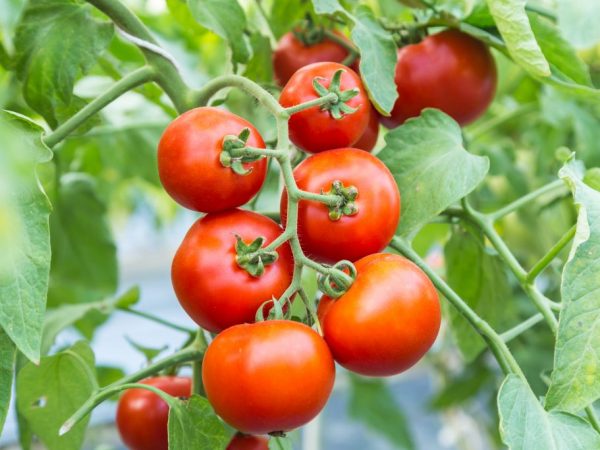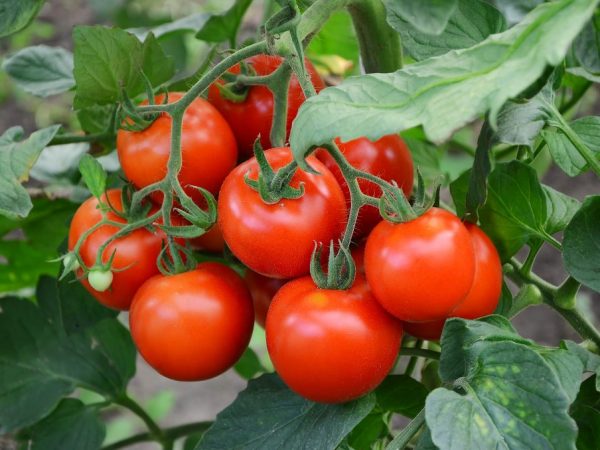Characteristics of Tolstoy tomato
Tomatoes are a popular vegetable in the nightshade family, grown in many countries around the world. Depending on the variety, tomatoes will require different conditions for their growth. There are hybrids specially bred for the changeable climate of the Central European zone - they are able to adapt to changes in weather conditions. These include the Tolstoy F1 tomato bred by the Dutch breeders of the Bejo Zaden company. It is popular among gardeners due to its unpretentiousness and ease of growing. This is evidenced by farm reviews and a description of the tomato by Tolstoy.

Characteristics of Tolstoy tomato
Description of the variety
Both in greenhouses and in vegetable gardens, gardeners grow the fruits of a tall Tolstoy F1 tomato with a long ripening period. What is its characteristic:
- ripening duration - about four months;
- strong stem and powerful root, deciduous bushes, short internodes;
- long branches in need of a garter;
- 6-7 chambers with semen;
- three-meter height;
- 12-15 brushes on a bush;
- fruit weight up to 130 g.
High yield - an average of 15 kg per bush, about 100 tons per hectare. the maximum size of one fruit is 500 g, with the largest specimens growing on the lower branches of the plant. Dense skin, glossy and sloping surface. Round, flattened red fruits (green in immaturity) of the same color both inside and outside. No green spot on the ribbed peduncle. Juicy pulp with an exquisite taste and fruity notes, rich, moreover, in various useful substances: vitamins C and B group, organic acids, magnesium, potassium, etc.
The period of growth and development of tomatoes of this variety lasts just over 2 months. All copies ripen by the same date. Tomato Tolstoy F1 is used for making salads, preserving, pickling; juices, pastes and sauces are prepared from it. The recommended volume of mass planting is 30,000 plants per hectare.
Benefits
This variety perfectly adapts to almost any environment, it can be grown even in shaded areas: it tolerates heat. However, the best option is greenhouses. Has immunity to fungal diseases such as tobacco mosaic and fruit rot, and various garden pests.

The plant is resistant to several diseases
Unripe fruits can be stored for about six months without changing their taste. Thanks to their strong skin, tomatoes do not crack during ripening and transportation.
Negative sides
Among the disadvantages of the variety, one can single out a weak development on "poor" soils, in the open field, a weak immunity to the late blight fungus. This ailment can infect a tomato even in a greenhouse.
Growing rules
Growing up is not an easy process. A hybrid variety requires certain conditions for its growth. Tolstoy tomatoes are no exception, based on the characteristics. The seedlings must be at least 2 months old.To check the readiness of seeds purchased in a specialized store for growing, you need to do the following: dip the seeds in a glass of salt water. If they go to the bottom, you can start sowing.
The soil where the seedlings will be planted must first be fertilized with organic substances and disinfected with a manganese solution. The area is suitable for fertile sandy-clay soils. Greens are ideal as a precursor to tomatoes, but not peppers, zucchini or potatoes. In the fall, a mixture of peat with rotted manure is introduced into the soil.
The seeds are planted in loosened soil in small peat glasses, 50% filled with soil. In the middle of the ground, a 1 cm depression breaks through, 3 seeds of the Tolstoy f1 tomato variety are planted there and sprinkled with soil, then moistened with a sprayer. Seedlings are placed in a dark room with room temperature (about 25 degrees) and good lighting. When the first leaves appear, the seedlings are divided into different pots with flavored wood ash, earth and moved to the sun. The film is removed. Some experts, as can be seen from the reviews, when transplanting, remove a third of the main root, thereby stimulating the intensity of ripening of lateral shoots. This has a positive effect on future yields.
A month later, the soil is fertilized with liquid organic matter. Every four days, the seedlings must be taken out to fresh air or simply open the windows in the room so that the sprouts adapt to the fresh air. What to do next to get the maximum yield of the tall variety?
Seedling care
The beginning of May is marked by the planting of prepared tomato seedlings in open soil. If the weather is cold, tomato seeds need to be covered with plastic or glass sheets during this time. What are the basic rules should be followed in handling seedlings so that they are as fertile as possible?
- The distance is at least 0.5 m from one bush to another - Leo Tolstoy's tomato loves space.
- The variety needs monthly feeding. Berry fertilizer is suitable.
- Watering tomato seeds should be sub-root, not affecting the outer stem - this will help protect the plant from parasites and fungi. Use warm, settled water.
- Keep the room temperature around 21 ° C during the day and 15 at night.
- Provide sufficient light so that the stems do not pull out too quickly. If natural light is impossible for at least half a day in a row every day, use a special lamp.
- Garter the stems with stakes.
- Avoid wind blowing the seedlings, use a brush holder.
- Do not forget about regular weeding and loosening of the soil around the bush after watering and the timely removal of weeds, pinching.
During the period of intensive growth, it is especially important to comply with all the necessary conditions for caring for the Tolstoy f1 tomato variety. You can remove the fruits throughout the season, and proper care in comfortable conditions will bring 3-4 harvests in 1 year.
As can be seen from the characteristics and descriptions of Tolstoy tomatoes, they are the best option for growing in almost any part of the country. Unpretentiousness, combined with high yields, make the Leo Tolstoy tomato variety one of the leaders among domestic gardeners, as can be seen from their reviews on agronomic forums.


